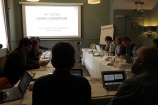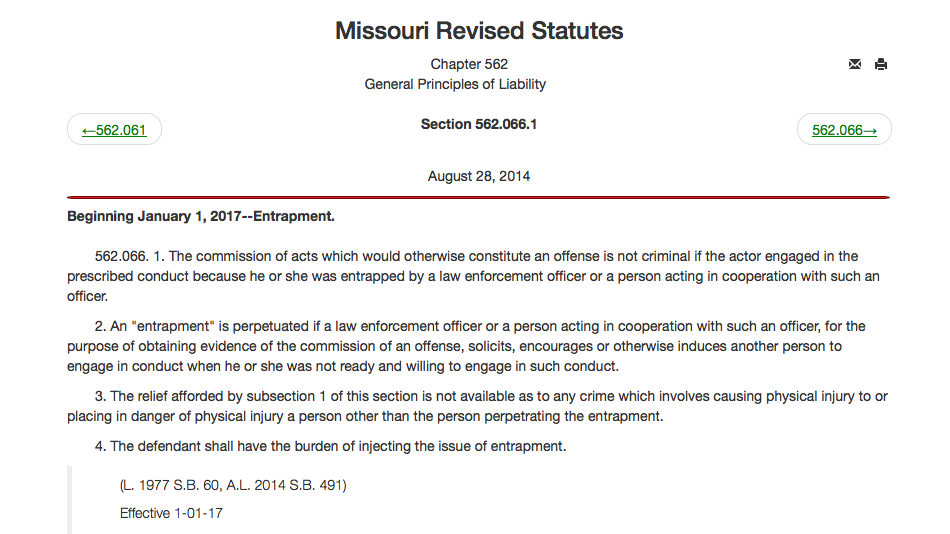Remarks written for the “Movement to End HIV Criminalisation” panel at Concordia University, Montreal, 15 September 2016, by Laurel Sprague, Research Fellow in HIV, Gender, and Justice, HIV Justice Network.
Before beginning my remarks, allow me to note that there are so many nuances and variations in the specific instances that people face that these remarks can only scratch the surface. Still, I offer these remarks in the hope that my thoughts will add to, bring in new perspectives, and support the continuation of the dialogue already in place.
The public is often sold a compelling story about HIV criminalisation, one that fits into their ideas about how gender works and what it means to be a good citizen. People are told that criminalising people who are living with HIV and who fail to disclose that fact to a potential sex partner will protect women from acquiring HIV.
The subtext, of course, is that the people living with HIV and having sexual relationships are generally men, that the only considerations these men with HIV have are to maximize opportunities for sex, that women should be considered as passive prey for these men, and that putting a law into place will either convince men to disclose their HIV status to female partners or lock them up if it seems they have not done so, restricting their ability to transmit HIV to women, at least to other women, beyond those who bring charges.
Why are women living with HIV concerned about HIV criminalisation? If you are going to take away peoples’ freedom in my name, then you should expect that I would have something to say about that.
What I have to say is: not in my name. Do not incarcerate people living with HIV in my name.
Women living with HIV are also concerned about HIV criminalisation because, once these laws are passed, we are caught up in their dragnet. Frequently, we live in fear of prosecution, even when we closely follow the law. Too often, like our brothers living with HIV, we find ourselves facing prosecution. The same gendered impulse to “protect” women by passing laws, judges women harshly when we acquire HIV ourselves.
In Uganda, in 2014, police, accompanied by a mob, pursued nurse Rosemary Namubiro, a woman living with HIV, after an accusation that she stuck a child with a needle that might have pricked her own skin when the child flailed. Rather than responsible media coverage of the incident, Rosemary was characterized repeatedly before trial as a “killer nurse,” and a “witch” seeking to intentionally infect children. Her HIV status turned her, in the eyes of the media, society, and the legal system, from the epitome of good womanhood — a licensed nurse with decades of exemplary service — to the epitome of bad womanhood – dangerous, unrestrained, supernatural. Women living with HIV in Uganda and around the world stood with Rosemary to support her and because we knew in our bones that stigma against women living with HIV means each of us is only one accusation away a prison sentence.
The impact of these laws against women living with HIV are usually not so far away geographically. To give just a few examples, two women living with HIV, Cicely Bolden and Elisha Henson, were brutally murdered after disclosing their HIV status to a boyfriend or sexual partner. Each of their killers admitted to the murder. Each claimed that their HIV-status made the murders justifiable. When, in place after place, laws are passed requiring people with HIV to disclose their status no matter what, then we will see, place after place, further violence against women living with HIV.
Here in Quebec, a woman living with HIV went to police for protection for her and for her young son from her violent male partner. When the police arrested him, he claimed that she had HIV and had not disclosed her status to him. Despite all evidence to the contrary, he was released and she was sentenced to prison, only released in 2012 by the Canadian Supreme Court, not because the sentence was found to be unjust or unwarranted, simply due to a technicality.
Women living with HIV expect that the words of any abusive, but HIV-negative, partner will be believed over our words in a court of law.
Why do women living with HIV care about HIV criminalisation? Because we want the laws to stop condemning us to violence. We want you to stop locking us up.
In Canada, there is no HIV-specific law that criminalises people living with HIV for non-disclosure, alleged exposure or transmission. This is, seemingly, in line with the consensus from the Joint United Nations Programme on HIV and AIDS (UNAIDS), the Oslo Declaration, and multiple recommendations from other global organizations and researchers.
Global guidance, such as that released by the Global Commission on HIV and the Law in 2012, calls for an end to HIV-specific laws, citing extensive research showing that these laws fulfill no public health goals but do succeed in furthering discrimination against people living with HIV. Unfortunately for Canadians living with HIV, Canada serves as a prime example of what can go dreadfully awry even in the absence of HIV-specific laws.
In Canada, if I, as a woman living with HIV, engage in sexual intercourse with another person without disclosing my HIV status, I can be charged with aggravated sexual assault. This means that, for consensual sex with another adult, I can be charged as the worst form of rapist. In fact, I can be prosecuted for aggravated sexual assault whether or not my partner acquires HIV from me and no matter how low the risk of transmission.
In fact, as of 2012, only if I can prove both that my viral load is undetectable and that a condom was used, can I fight the charge of sexual assault. It is a chilling reality that condom use is impossible for a woman to guarantee without the cooperation of her partner and that, in Canada, women living with HIV are significantly less likely to receive the quality of care and support needed to bring their viral load to an undetectable level.
The legal leap from a claim of HIV non-disclosure to a prosecution for aggravated sexual assault is not obvious: the rationale behind this leap is that if a person has not disclosed her positive HIV-status to a sexual partner, then she has made it impossible for her partner to consent to possible sexual exposure to HIV. Without this consent, sex between them is labeled rape. Within Canada, the law goes one step further because failing to disclose one’s HIV status is also considered to be fraud. When fraud is added to the rape charge, then the charge is increased to aggravated sexual assault. The Canadian Supreme Court decided in R. v. Mabior (2012), that only when the person with HIV has both an undetectable viral load and uses a condom, are they protected from the charge of aggravated sexual assault.
Within Canada, there has been a robust feminist response to the way in which the law on sexual assault has been used to prosecute alleged non-disclosure of one’s HIV status. Briefly summarized, feminists attentive to the laws have argued that it is egregious to conflate HIV non-disclosure with rape, much less aggravated rape and that the law waters down the hard won gains in Canada regarding consent in sexual relationships. Further, feminists explain that the law is likely to discriminate against the most vulnerable and to be applied arbitrarily, pointing to cases across the country that make that very point.
Of course, there are many strands of feminism and not all Canadian feminists echo these concerns. In many ways, HIV criminalisation highlights a critical fault line amongst both feminists and queer theorists and activists. This fault line is the tension surrounding the appropriate use of State power for protection versus emancipation of people who are vulnerable to violence enacted against them by other members of society.
Women living with HIV across the world have responded to this theoretical debate with a strong assertion of our own: creating laws specifically to protect women does not work. Long practice in country after country demonstrates that equal protection under the law is rare, instead, those most marginalized in a society will be those most often targeted for incarceration. Women’s vulnerability to violence has not been, and will not be, reduced by further laws purporting to protect women
Let me situation myself in this conversation: I am a woman living with HIV, who acquired HIV shortly after my 20th birthday during a relationship with a male partner in his late 30s. It is a common story globally of a young woman acquiring HIV from an older man. We would like to stop those things from happening, right?
What happens to the story if I add some context? What if I share that I was a sexual assault survivor from my high school years, which was traumatic, shameful, and normal within my circle of high school friends? What if I add that I was raised within a fundamentalist religious community, with the lower status as a girl and the judgment and scrutiny that exist in those communities? Does it matter that I felt safer and more protected by this partner than I had previously in my life?
So, just what is it that we would like to stop from happening?
Would locking him up solve the problem of gender inequality?
Let’s complicate the story further, with more truths: does it make a difference that he disclosed his status to me? Does it make a difference that he was also a survivor of sexual and physical assault?
Was he careful with me? No, he wasn’t. Should he go to jail? Not legally, he disclosed his HIV status. What about ethically: is this the answer?
The easy answer, the one that allows every one of our social inequalities to continue, is to say: lock him up.
Now, think to yourself: what if he hadn’t disclosed his status? Does that change anything? Everything? Could I have been any more or less empowered to advocate for my own sexual health? Could he have been any better or worse at advocating for his own well being? Neither of us was skilled at self care. Both of us were skilled at self injury.
Now, what if I went to the police and claimed the he had HIV and did not disclose?
In the United States, 25 years later, it’s likely he would still be in prison. In Canada, there is no reason to believe that he would not have served years in prison as well.
What if I claimed, instead of HIV non-disclosure, that he physically beat me or raped me (he did not)? He probably would not be prosecuted, or, if prosecuted and convicted, would not serve nearly the same sentence length. That should give up pause.
We know that exactly this scenario happens here, including here in Quebec, where the woman living with HIV, mentioned earlier, after being severely and repeatedly beaten by husband over period of years was jailed herself when she tried to prosecute him – because he alleged that she didn’t disclose her status. He walked free.
Why would we treat HIV non-disclosure more seriously than physical attacks? The question is puzzling: non-disclosure charges arise only in the context of non-coerced sexual activity between adults. In this situation, unlike physical assault, either partner could walk away or suggest condoms or other barriers. If a physical assault has happened, and the assailant is HIV-positive, then the laws on assault are more than adequate to handle that situation.
So are we, as it seems, trying to protect women and others from HIV but not from real violence enacted against their bodies? Why would that be?
If we analyse prosecutions for HIV non-disclosure with the understanding that the rhetoric about protecting women fails under examination, then what is left is naked stigma and the desire to regulate certain bodies deemed outside of the boundaries of respectable society: those bodies perceived as likely to have HIV. Notably, the only legal requirements are for those living with HIV. There are no legal requirements for those perceived to be HIV-negative to take safer sex precautions or even to have a conversation about sexual transmitted infections they or their partners might have acquired. What we see is an effort to control and punish the bodies perceived to be HIV-positive and an effort to ensure complete freedom from responsibility for those bodies perceived to be HIV-negative.
This is a situation of immense injustice. What the laws does is to scapegoat vulnerable people instead of addressing real and difficult social problems such as the gender inequality that persists across classes and countries, which make it difficult for women to protect their health and well-being and for people living with HIV to do the same. The meme of a heterosexual man living with HIV exposing an unsuspecting heterosexual woman to HIV disregards everything we know about this epidemic: that most people acquire HIV because they are themselves part of a vulnerable group; that reducing new infections happens most effectively when safer sex practices become normal rather than exceptional; that once people learn their positive HIV status, they seek to avoid transmitting to others; and that most new infections occur from transmissions between people who do not know their HIV status.
To return to my story, I tested positive for HIV after I became pregnant. Immediately, under the law, I became the person vulnerable to criminal penalties. Like so many of my male friends, my HIV diagnosis gave me the courage to come out. I remember waiting in fear for a partner to call the police. I remember the end of a short relationship when I was 24 or 25, she was angry that I didn’t want to continue the relationship. I had disclosed my status; we had practiced safer sex; I went with her to get tested and was sick to my stomach with fear she would somehow test positive. Although, I was certain that I was the only person she had ever practiced safe sex with; I was equally certain that her anger with me would motivate her to go to the police.
She did not test positive. She did not go to the police. If she had, what would have happened? Of course, luckily, we do not know. However, based on the data we have from the States, I expect I would have gone to prison.
The stigma that exists, indeed is flamed, against people with HIV would have intersected with the other marginal statuses most of us have, and then been combined with laws that single us out — laws which say to the police, judges, prosecutors, and world at large that we are a particular group of people with disregard for others, a danger, and must be controlled – these factors added together would have made my chance of being heard, of the truth being heard, minimal.
It is important to remember that the law has only one edge. The law is designed to protect the status quo. It is not revolutionary.
HIV criminalisation singles out people living with HIV — people who already face high levels of stigma and discrimination simply for having a medical condition that is associated with groups subjected to social prejudice — for criminal prosecutions for consensual sex among adults. Is this the liberation that we, as feminists, have been fighting for?
To end my remarks, allow me a moment to give credit to the Canadian HIV/AIDS Legal Network, the Positive Women’s Network-USA, the Sero Project, the International Community of Women Living with HIV, and the many other feminist people of all genders working on HIV, criminalisation, mass incarceration, gender-based violence, prison abolition, and human rights with whom I have been fortunate to have soul-searching discussions about the issues that I have addressed here. I also need to thank Edwin Bernard and the HIV Justice Network for all of these reasons and more, especially for taking the chance and hiring me to focus on the issues of gender, justice, and HIV that matter to me so deeply.


















 To try and understand why the story was published, I first asked colleagues in South Africa on Facebook.
To try and understand why the story was published, I first asked colleagues in South Africa on Facebook.